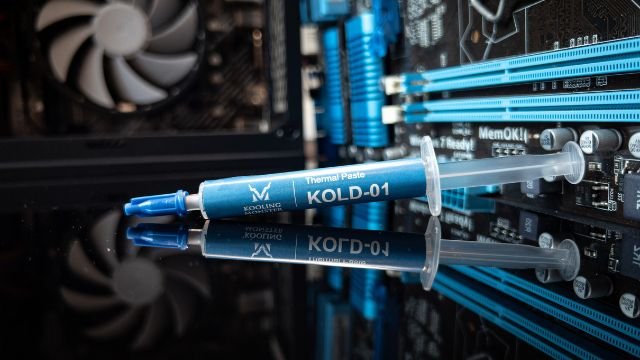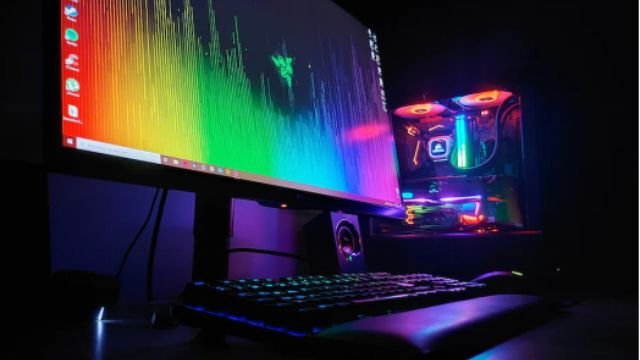Is It Okay to Use My Gaming PC Without Thermal Paste?
Gaming is one of the heaviest things you can do on your PC. Modern AAA titles put quite the pressure on your computer components, especially the CPU and GPU. That’s why it’s important to keep their performances in check.
However, a crucial factor about thermal management that many rookies tend to ignore is thermal paste. It’s important to have a good quality thermal paste applied to your CPU and GPU to prevent them from overheating.
But — can you actually ever game on your PC without having any thermal paste on the CPU/GPU?
Let’s find out.
What happens if I run my gaming PC without thermal paste? Is it okay to run my gaming PC without thermal paste?
No, it is absolutely not okay to play games on your PC without thermal paste.
As said earlier, gaming is one of the heaviest tasks you can do on your computer. If you don't apply thermal paste on your CPU and GPU, your computer won't be able to dissipate heat effectively.
Hence, it will overheat very quickly.
When that happens, there are a few things that could occur.
1. Your computer will reach unsafe temperatures and the performance will throttle. Your FPS in gaming will drop significantly.
2. If you're lucky, your computer will shut down randomly to cool down or you might see the blue screen of death.
3. If you are unlucky, you might end up melting your CPU or GPU and damaging it permanently.
Learn more about How to Check CPU Temperature and Why Is It Important?
The following graph shows a case study comparing the thermals of a PC with thermal paste and one without it.
How to apply thermal paste on a gaming PC?
You will need to apply thermal paste based on your CPU and GPU both. Here's how you can do it for both components.
For your CPU:
1. Open up your computer's case.
2. Lift the heat sink from the top of the CPU.
3. Remove the old thermal paste (if any) from the CPU as well as the heat sink.
4. Grab your new thermal paste and apply it using your preferred application method.
5. Make sure to get a thin and even layer of thermal paste.
6. When you have the perfect layer applied, put the heat sink back on top of the CPU.
7. Close your computer's casing and start using it as usual.
Learn more about How to Apply Thermal Paste to a CPU? [2022 Step-by-Step Beginner Guide]
For your GPU:
1. Disassemble your GPU by taking off the screws, removing the top plate, disconnecting the fan cable, and removing the cover.
2. Remove the heatsink from the top of the GPU.
3. Remove the old thermal paste from the GPU as well as from the heat sink.
4. Apply the new thermal paste. Make sure to get a thin and even layer of it.
5. Reassemble your GPU by connecting all the components you removed earlier.
6. Put it back on your PC and start using it as usual.
Learn more about How to Correctly Apply Thermal Paste on GPU/Graphics Card (2022 Step-By-Step Beginner’s Guide)
How to choose the best thermal paste for a gaming PC?
There are many factors that make a thermal paste great — and you need to pay attention to all of them.
Here are the qualities you need to look for.
1. The most important property of a good thermal paste is its heat transferability. A great-quality thermal paste will be able to move the heat from the CPU/GPU to the heatsink as effectively as possible.
2. A good quality thermal paste is also very easy to apply. It's easy to move around when you want to move it around, and it sticks into place when you don't touch it anymore. (Learn more about What Is Thermal Paste Viscosity?)
3. It shouldn't be electrically conductive. Electrically conductive thermal paste can damage your computer if you accidentally spill it on components where it shouldn’t be. (Learn more about Is Thermal Paste Electrically Conductive?)
If you are looking for a thermal paste with all these properties, feel free to check out Kooling Monster KOLD-01. KOLD-01 has high heat transferability meaning it can efficiently transfer all the heat that your CPU/GPU is producing.
Plus, due to the unique rheological structure, it's very easy to apply. You can spread it around easily when you want to, but when you leave it alone, it sticks to its place.
Last but not least, KOLD-01 is not electrically conductive, which means it will not cause a short circuit in your computer if you end up spilling it on other components.
As for gaming PC, how often do I need to replace thermal paste?
A normal user who doesn't do any heavy tasks on their computer doesn't need to replace thermal paste very often. They can do away with replacing the thermal paste every 2 years on the CPU and every 5-8 years on the GPU.
However, if you play games on your computer regularly, it will dry out the thermal paste faster. You will need to replace it more frequently.
It's recommended to replace a thermal paste on the CPU every 1-1.5 years. For the GPU, you should replace it every 3-5 years.
But you shouldn't rely on these estimates for your specific case. The rule of thumb is to replace the thermal paste when you notice that its thermal performance is suffering. Keep an eye on the performance of your CPU and GPU, and when you notice that the temperature is higher than it should be, replace the paste.
Learn more about How Often Should You Replace Thermal Paste?
The bottom line
It’s never recommended to game on your PC without a thermal paste. In fact, it’s not recommended to do anything on your computer without a thermal paste.
Even though the thermal paste may feel like an unimportant component, it actually makes a massive difference, as demonstrated by our case study above.




